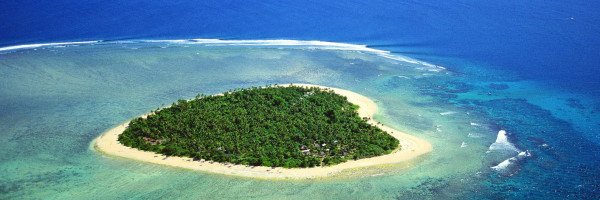The Historical Context of Fiji’s Caves
Fiji’s historic caves are not merely geological formations; they are essential to understanding the islands’ rich cultural heritage. The caves have served various purposes throughout history, from sacred spaces for rituals to shelters for early inhabitants. Many caves, such as the renowned Naihehe Cave in Taveuni, have been linked to ancient tribes’ spiritual practices, reflecting the profound connection between the Fijian people and their environment. The caves also acted as refuge sites during times of conflict, illustrating their strategic importance. In historical contexts, these caves were seen as portals to the spiritual world. Communities would perform rituals to honor ancestors and deities, believing that the cave’s atmosphere amplified their prayers. For those interested in exploring Fiji’s historic caves, it’s essential to appreciate these sites as more than just tourist attractions; they are remnants of a living culture. To dive deeper into the culture and history of Fiji, visit Fiji Islands for resources and insights.Ancient Rituals and Ceremonies in the Caves
The caves of Fiji have long been the backdrop for various ancient rituals and ceremonies. These rituals often revolve around themes of fertility, healing, and ancestral worship, with the caves serving as sacred spaces where the physical and spiritual realms intersect. The Naihehe Cave, for example, was the site of rituals conducted by the Tui Cakau, a paramount chief, to commune with ancestors and seek guidance. In addition to spiritual rituals, caves were also venues for community gatherings, where storytelling and sharing of traditions took place. This oral history is crucial for preserving the cultural significance of Fiji’s caves. Visitors to these sites can often feel the energy and history embedded in the rock formations, connecting them to the stories of the past. To understand the diverse rituals conducted in these caves, exploring further resources is essential. Check out Fiji Islands for more information on cultural practices.The Ecological Importance of Fiji’s Caves
Beyond their cultural and historical significance, Fiji’s caves play a vital ecological role. They serve as unique ecosystems that host a variety of flora and fauna, some of which are endemic to the region. The stalactites and stalagmites found in these caves contribute to the geological history of the islands, showcasing thousands of years of natural processes. Caves like the Bouma Cave in Taveuni are not only breathtaking but also house unique species of bats and other wildlife. Conservation efforts are essential to protect these natural habitats, which are often threatened by human activity and climate change. Understanding the ecological importance of these caves can inspire visitors to adopt more sustainable practices while exploring the islands. For more insights into Fiji’s natural wonders, you can explore Fiji Islands.Fiji’s Caves and Their Role in Modern Culture
The legacy of Fiji’s historic caves continues to influence modern Fijian culture. Today, many communities still regard these caves as sacred spaces that require respect and reverence. Cultural festivals often incorporate cave rituals, allowing younger generations to connect with their heritage and reinforce their identity. In addition to traditional practices, the caves have become significant for tourism, drawing visitors interested in experiencing the rich history and spirituality associated with these sites. Guided tours often include storytelling sessions that highlight the caves’ historical and cultural contexts. This fusion of ancient and modern practices illustrates how Fiji’s historic caves remain integral to the islands’ cultural landscape. For those eager to learn more, the Fiji Islands website offers a wealth of information on cultural events and traditions.Tourism and Preservation of Historical Caves
With the increase in tourism, the preservation of Fiji’s historic caves has become a pressing concern. While tourism can provide economic benefits, it also poses risks to the delicate ecosystems and cultural sites within these caves. Sustainable tourism practices are essential to ensure that these historical sites can be enjoyed by future generations. Efforts are being made to educate visitors on the importance of these caves and the need for respectful exploration. Guidelines for visiting these sites often emphasize minimizing environmental impact and following cultural protocols. To support sustainable tourism, visitors can choose guided tours that focus on education and conservation. For more information on how to engage with Fiji’s historic sites responsibly, visit Fiji Islands.The Influence of New Zealand on Fiji’s Cave Traditions
Exploring the cultural significance of Fiji’s historic caves also invites comparisons with New Zealand’s own cave traditions. Both cultures have rich histories tied to their natural landscapes, where caves served as sacred spaces, refuge, and sites for ancestral worship. Like the Fijians, Māori culture in New Zealand views caves as places of spiritual importance, with numerous caves associated with creation stories and tribal history. New Zealand’s Waitomo Caves, famed for their glowworms, also serve as a reminder of how caves can be both natural wonders and sites of cultural significance. Visitors to both Fiji and New Zealand can appreciate the shared connection to the land and the tales that these caves tell. For those interested in weaving these experiences together, the Fiji Islands offers resources that highlight the interconnectedness of Pacific cultures.Experiencing the Spirituality of Fiji’s Caves
For visitors to Fiji, experiencing the spirituality of the historic caves can be transformative. Engaging with local guides can enhance understanding and appreciation of the rituals and traditions that have taken place within these sacred spaces. Many tours offer opportunities for visitors to participate in traditional ceremonies, providing a deeper connection to Fijian culture. It’s essential for visitors to approach these experiences with an open heart and mind, respecting the beliefs and practices of the local communities. By embracing the spirituality embedded in these caves, travelers can foster a more meaningful connection to the islands. For further exploration of cultural practices in Fiji, you can visit Fiji Islands for additional insights and resources.FAQs
What are the historic caves of Fiji?
The historic caves of Fiji are natural formations that have been used by indigenous Fijians for centuries. These caves hold significant cultural value as they served as sites for ancient rituals, ceremonies, and as shelters during times of conflict. Many of these caves are adorned with carvings and artifacts that reflect the rich history and traditions of the Fijian people.
Why are the caves considered culturally significant?
The caves are considered culturally significant because they are linked to the spiritual and social practices of the Fijian people. They have been used for important rituals, including burial practices and offerings to deities. The caves also serve as historical archives, preserving the stories and traditions of the Fijian ancestors for future generations.
What types of rituals were performed in Fiji’s historic caves?
In Fiji’s historic caves, various rituals were performed, including ceremonies for fertility, healing, and ancestral worship. These caves often served as sacred spaces where offerings were made to appease the spirits of ancestors or to seek guidance and blessings from the gods. The significance of these rituals is deeply rooted in Fijian spirituality and community bonding.
Are there any famous caves in Fiji that are particularly notable?
Yes, several caves in Fiji are particularly notable, such as the Sawa-i-Lau Caves in the Yasawa Islands, which are known for their stunning beauty and cultural importance. The Naihehe Cave, located in the Sigatoka Valley, is another famous site, historically used for shelter and rituals. Each of these caves has its own unique stories and significance to the local communities.
How do the historic caves contribute to Fiji’s tourism?
The historic caves of Fiji contribute to tourism by attracting visitors interested in exploring the rich cultural heritage of the islands. Guided tours to these caves often include storytelling about their historical significance and the rituals that took place there. This not only provides an immersive experience for tourists but also helps in preserving and promoting Fijian culture.
What efforts are being made to preserve these historic caves?
Efforts to preserve Fiji’s historic caves include ongoing research, conservation initiatives, and community engagement programs. Local organizations and the Fijian government are working together to protect these sites from environmental degradation and vandalism. Educational campaigns are also in place to raise awareness about the cultural significance of the caves among both locals and visitors.
How can visitors respectfully engage with Fiji’s historic caves?
Visitors can engage with Fiji’s historic caves respectfully by following guidelines set by local authorities and tour guides. This includes refraining from touching or removing any artifacts, respecting the spiritual significance of the sites, and adhering to any specific rules regarding photography and behavior within the caves. Engaging with local guides can also enhance understanding and appreciation of the cultural heritage associated with these historic caves.
References
- Fiji Islands Official Tourism Website – This site provides comprehensive information about Fiji’s cultural heritage, including insights into its historic caves and the rituals associated with them.
- South Pacific Islands Travel – An informative resource on the cultural significance of the South Pacific, featuring articles about Fiji’s ancient traditions and the role of caves in local rituals.
- Fiji Times – A reputable news source that often covers cultural topics and historical features, including the significance of Fiji’s caves in traditional practices.
- ABC News Australia – This article delves into the ancient rituals performed in Fiji’s caves and their impact on the local culture, providing an in-depth look at historical practices.
- JSTOR – The Significance of Caves in Fijian Culture – A scholarly article discussing the historical and cultural importance of caves in Fiji, including their use in rituals and community gatherings.







